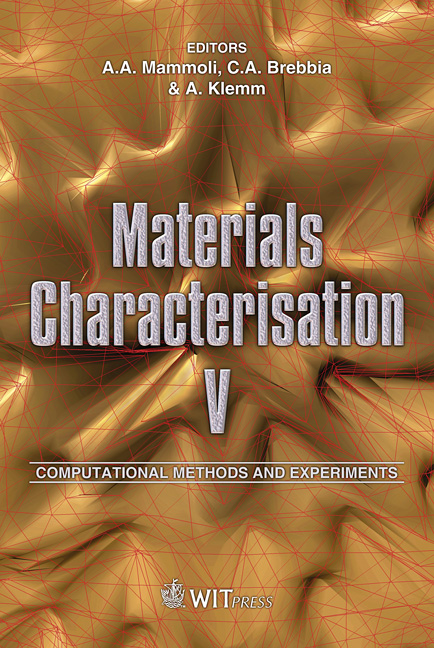Nanomechanical Structure-property Relations Of Dynamically Loaded Reactive Powder Concrete
Price
Free (open access)
Transaction
Volume
72
Pages
12
Page Range
287 - 298
Published
2011
Size
1,897 kb
Paper DOI
10.2495/MC110251
Copyright
WIT Press
Author(s)
P. G. Allison, R. D. Moser, M. Q. Chandler, T. S. Rushing, B. A. Williams & T. K. Cummins
Abstract
Low water-to-cement ratio (w/c) reactive powder concretes (RPCs) exhibit much higher compressive strengths compared to conventional concrete through optimized particle packing and specialized curing regimes. The high strain-rate impact behavior of RPCs was investigated at the macroscale. However, little work has been done to study the fundamental material behaviors and failure mechanisms of RPC under high strain impact and penetration loads at lower length scales. These high strain-rate loadings have many possible effects on RPCs at the microscale and nanoscale, including alterations in the composition and bonding present in hydrated phases such as calcium silicate hydrate (C-S-H), in addition to fracture and debonding. In this work, the possible chemical and physical changes of RPCs under high strain-rate impact and penetration loads were investigated using a novel technique wherein nanoindentation measurements were spatially correlated with chemical composition using electron microscopy. Results indicate that high strain-rate impacts degrade both the elastic modulus and indentation hardness of RPCs and, in particular C-S-H, with damage likely occurring due to microfracturing and debonding. Additional studies will be required to better understand degradation phenomena within C-S-H itself. Keywords: nanoindentation, SEM, EDX, RPC, UHPC, C-S-H. 1 Introduction Concretes and Portland cement-based materials are the most-produced manmade materials on earth, with over twenty billion tons produced per year. The
Keywords
nanoindentation, SEM, EDX, RPC, UHPC, C-S-H





